Inganzo Art Gallery: Paradise for Youthful Artists
The post-genocide Rwanda saw many refugees coming back from the neighboring countries they had sought refuge in to reconstruct their country, battered for many years by ethnic conflict.
Among them was a new generation of visual artists who had spent their years outside the country. These youthful artists came back with artistic creativity they had learned outside the country, leading to creation of a booming art industry in the country.
Although in his mid 60s now, Epa Binamungu’s name is synonymous with the vibrant contemporary art scene thriving now in Kigali.
Birth of Inganzo Art Gallery
He established his Inganzo Art Gallery in the former Kigali Business Center (KBC) in Kacyiru 16 years ago, a neighborhood which began to draw in more affluent residents who were attracted by its great location and soon established a reputation as an artist community.
Epa Binamungu. The legendary artist says unlike some artists, he produces art “for the lovers of art” and not just for tourists. Having accomplished secondary school and later attended the Institute of Pedagogical Science University in 1975 in DR Congo where he majored in Biology and Chemistry, Binamungu decided to embark on his long desired art career, a choice that he says he has never regretted to this day.
Bringing visual art back to Rwanda
Binamungu says times following his return to Rwanda, at the end of the Rwandan Genocide against the Tutsi in 1995 weren’t easy, as people were still in shock, yet they didn’t recognize art at all.
“The few who seemed to develop interest used to ask me what I was drawing and this hurt me so much since it clearly showed a gap,” he explains. But he gathered more courage of always explaining to them concepts of his art, which worked out in turn.
Four years ago, Binamungu moved Inganzo away from the hustle and bustle of Kigali city to a serene rural environment at Masaka sector, Kicukiro district where he says is a center for youthful artists to come and explore their artistic talents and rapport with fellow artists.
Once inside Inganzo Art Center, the feeling one gets is that of being on an upcountry ranch without livestock. It’s all lush green – dense tree canopies all over, blooming flower gardens lining the neatly maintained lawns, and an abundance of fruit trees.
The art center has three parts. The “Inganzo In” is a modern gallery divided into various rooms where artists can showcase their finished products on the walls. The “Inganzo Off” is a big, white tented pavilion where artists can come, work and display their work while the “Inganzo Workshop” is where the artists produce their actual work.
“I have long nurtured a dream to have a place where artists can come together and just enjoy creating art in a serene environment. Inganzo Art Center welcomes the East African art community by providing a place for creative and innovative programming, spaces to create and display, and a schedule of art-related opportunities,” says Binamungu.
Since its inception, the new art center has hosted a variety of workshops and exhibitions for not only Rwandan artists but also from the East Africa region.
Inganzo Art Gallery rules 2017
In 2017, Inganzo hosted a group of 14 artists from Tanzania who were joined by 10 artists from Rwanda in what Binamungu says was to evaluate the artistic performance for the year and to artists from both countries to share their artistic ideas. Binamungu hopes to make this an end of the year annual event at Inganzo where artists from the region and beyond are going to come together and evaluate their performance for the year, while giving them a chance to bond and learn from each other.
Inganzo Art Center is also going to be an art research center and a residence for international artists who can come and develop creative ideas. “It was established for the seasoned artist and new talent to thrive,” according to Binamungu.
At the entrance of the Inganzo workshop is displayed a collection of carvings, statues, masks and figurines that Binamungu says he has been collecting all over the world during his over 40 years in the art industry.
Binamungu says unlike some artists, he produces art “for the lovers of art” and not just for tourists.
“Many artists display their artwork at strategic tourist attraction sites like national parks and even at the streets where they can easily be seen and bought by tourists. But having established myself in the industry, the choice of Masaka to build this center, away from Kigali, is an indication that clients will always come looking for you once you have established your name in the business,” says the veteran artist.
Read MoreMama Rwanda Giving Hope to Vulnerable Mothers in Gasabo
The 1994 genocide against the Tutsi left the family fabric in tatters. Women were rendered widows and forced to take care of their surviving young children. Children, with their parents killed during the genocide, had nowhere to go but to survive on the streets as hopeless orphans. Families were torn apart, and the effect of that period is still being felt today, 24 years later.
However, despite the gloom, the resilience of Rwandans is captured in one progressive youth who has given hope to vulnerable mothers and their children in Gasabo district. Bertrand Ishimwe, 23, founded the Mama Rwanda project in 2016 to help underprivileged women engage in sustainable activities to help cater for the basic needs of their families.
The first batch of 25 mothers who had been learning tailoring skills at Irembo Organisation in Kacyiru since the inception of Mama Rwanda graduated in April 2017 with certificates. Two of them, Dianne Umwari and Hillary Mukeshimana, have already secured employment with UTEXRWA, a leading garment factory in Kigali, while one of the mothers has gone ahead to open up her own tailoring business.
Mama Rwanda is a project running under Irembo Organisation, which Ishimwe said he founded in 2015 to help a group of vulnerable children attend school without financial and material hitches. The idea to help the children was hatched while he was still in Senior Six at Lycee de Kigali.
The first batch of 45 children under the care of Irembo was mostly being supported by foreigners. “But I thought about what would happen if these foreigners decided to withhold their support or pulled out. What would I do with them? That’s how the idea Mama Rwanda was born,” says Ishimwe.
He says the Mama Rwanda project was founded to provide these single mothers with training to develop valuable skills to help support their families.
An accomplished visual artist who also cofounded Niyo Art Center with his older brother, Pacifique Niyonsenga, Ishimwe says the most of the funds (65%) to run the project comes from sales of his artwork, while a small portion comes from well wishers. Rwanda Youth Team of Irembo is a group of youth Ishimwe schooled with and the group also helps in soliciting funds.
Last year, Ishimwe says, he did 10 exhibitions abroad and almost all the money raised was ploughed back to running the project. In July, he had an exhibition at Knox Gallery, St. Lois City in Missouri while in August he had two exhibitions at St. Peters Art Cultural Center and Lily Nyan art galleries also in Missouri.
He adds the success story so far is that the mothers who have managed to graduate can now hope to take care of their families. “Even though Irembo has been taking care of the education needs of their children, the mothers now have the opportunity to help support these children through providing them with other basic needs. Our mission is to uplift the living standards of as many families as we can manage,” says Ishimwe.
Ishimwe notes that even though they started with only a group of 45 children, the number has since risen and now stands at 126 whom they help to pay school fees and purchase other materials like books and school uniform. He says 10 of them are this year proceeding to O’Level while one girl has completed her Senior 6 studies at Gisenyi Adventist Secondary School and successfully graduated.
Elyse Maria Dusabe, a 35-year-old widow and mother of four says, “I’ve lived a miserable life since my husband died 13 years ago. My mind was always preoccupied, thinking of how I’m going to deal with the future. My four children haven’t had an education to insure their future. It’s this sewing project that has thrown me a lifeline because I’ve acquired the skill to make me work for my family.”
Irembo Organisation also runs another project for the women called Agaseke Women Project – where unemployed women learn the necessary techniques to make traditional Rwandan baskets, mats and derivatives in order to produce good quality products which are sold.
Over 17 women are currently involved in this project and their products are exhibited at Irembo Shop in Kacyiru.
Ishimwe says they intend to recruit more mothers who are going to receive tailoring training this year, and they also hope to open a shop where the mothers can display and sell their products.
Read More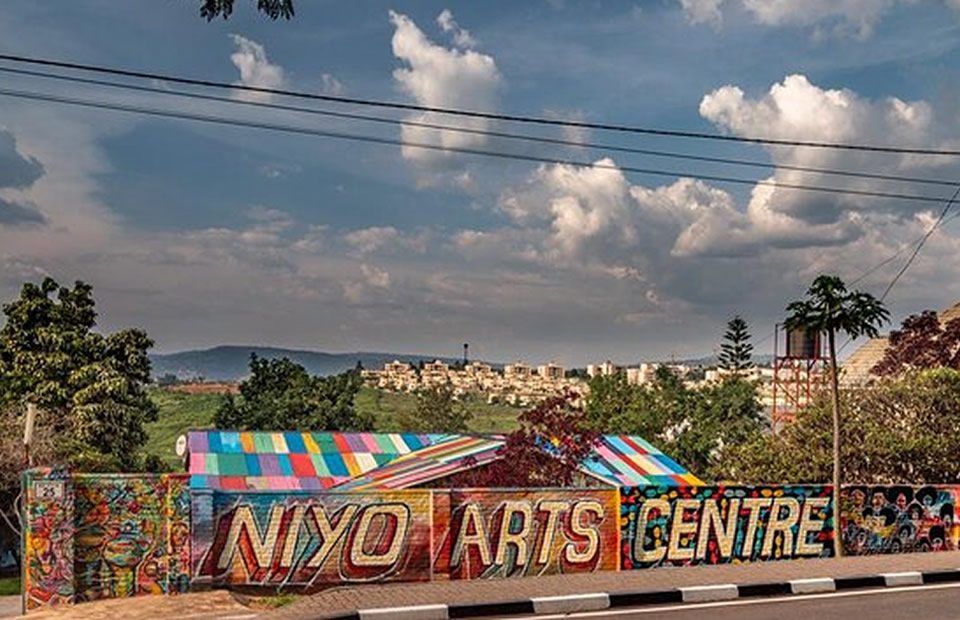
Niyo Art Centre Gives Hope to Children with Horrible Past
It’s five O’clock in the evening. The first sounds of drums penetrate the quiet Kacyiru neighborhood, Kigali, where Niyo Art Centre is located.
Inside, a group of adults are standing behind five waist-high drums they beat furiously but happily, as some dozen children or so respond to the sounds of the African drumbeats with scintillating dance. There is also a group of singers that belt out songs to accompany the drums.
After about nine minutes, the sounds of the drums slowly fade, and the dancing children wipe their brows of sweat and their feet of dust, as they prepare for another performance. A group of five tourists huddled together in front of performance clap their hands in unison.
However, despite the glow in their faces after being lost in the frenzy of their performance, what is indiscernible is that these children have a past. A horrible past.
Some of them have hitherto spent their lives on the streets, and slept on empty stomachs. They have only known pain, hunger and suffering throughout their brief existence in the world.
Some of them come from indigent backgrounds, their parents too poor to afford their meals, not forgetting education. Some of them are orphans who have never experienced parental love.
But now, their faces are beaming with hope for the future, thanks to Niyo Arts Gallery. Founded by Pacifique Niyonsenga in 2015, the art gallery has become a cradle of hope for these children who now go to school and also have a roof over their heads, as opposed to their former life where the world was too full of void and hopelessness.
Niyonsenga, himself a former street boy until a benevolent hand, a Canadian named Bruno Soucy, became his close friend, plucked him off the streets and helped him get education, says the art gallery was established to help them use their talents in arts to assist these vulnerable children.
He had established a charity organisation in 2012 to help street children get education as a tribute to his Canadian benefactor.
Niyonsenga, a prodigious visual artist and a drummer, says the charity organisation started with only 28 children in 2012 but now has 120.
“We have made tremendous development since its inception. We have managed to take the children to different schools, buy them scholastic materials and rent them houses in Gasabo district, Kigali,” Niyonsenga said in an interview with Chwezi Traveller.
He says that Niyo Art Gallery has now established a reputation as a top tourist attraction in Gasabo district, Kigali, on its own merit because of the programmes they have initiated and attractive arts and handicrafts that can be found inside the gallery.
Niyo Arts Gallery now has 11 artists displaying their artwork there. He says he and the other artist at his gallery donate 40% of their artwork sales to educate and house the children. They have also managed to attract a group of donors that support their programmes.
“We have managed to take one of our children up to the university, 23 are in secondary school while 68 are in primary. It’s gratifying that when art lovers purchase our products, the proceeds go for good purpose,” says Niyonsenga.
Apart from operations in the gallery, he adds that they also do exhibitions and sales abroad where they raise up money to plough back to help the children.
He says that in 2017 the centre held 10 different exhibitions: two in the USA, one in Belgium, one in Netherlands and Six in Kigali. “We have also acted as ambassadors of our culture in different capitals around the world when we showcase Rwanda’s arts and crafts abroad.
Most people in the Western world know Rwanda because of the insidious genocide, and they get mesmerized when we go out there and show them the real Rwanda,” says Niyonsenga.
Read More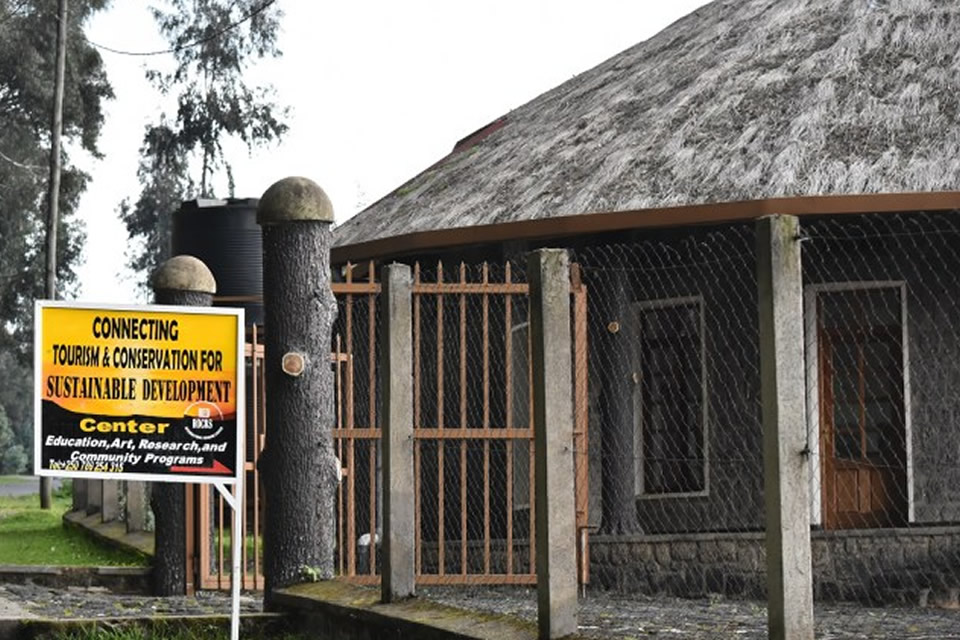
Art Centre Ramps Up Conservation Efforts in Rwanda
Since its inception in 2011 in Nyakinama village, seven kilometers west of Musanze town, Red Rocks Rwanda has been the centre where different programmes geared towards ramping up conservation efforts in Rwanda are hatched.
On January 5, 2018, Red Rocks Rwanda will unveil another programme in Kinigi, the heart of Rwanda’s tourism industry, with the main purpose of sustaining the organisation’s conservation efforts around the Volcanoes National Park through art.
According to Greg Bakunzi, the founder of Red Rocks Rwanda, the new Conservation Art Centre, an art gallery that will be operating out of Butorwa 1, is targeting educational institutions teaching art as a component of conservation to harness tourism, conservation and advocacy programmes as part of his organisation’s mission to achieve sustainable development around the Volcanoes National Park, home to the critically endangered mountain gorillas.
Aside from engaging the local community in conservation,
tourism and sustainable development, Bakunzi hopes that his organisation’s latest initiative will ramp up Rwanda’s conservation efforts through art.
“Art has a big role to play in the preservation of Rwanda’s heritage. By bringing together a pool of talented Rwandan artists, we are able to show our commitment to raise the consciousness of the imperative challenges Rwanda faces as one of the top tourist destinations, and also offer solutions for conserving the environment.
Red Rocks Rwanda art and craft programme is among the many ways trough which we are going to win this fight,” says Bakunzi, who is also the managing director of Amahoro Tours, one of the top 10 travel firms in Rwanda, according to the Rwanda Development Board (RDB), the government agency in charge of promoting investment, export and tourism in the country.
In order for his new initiative to be successful, however, Bakunzi says that the new Conservation Art Centre will have to work hand-in-hand with industry players, well-wishers, volunteers and government agencies.
Bakunzi reveals that the artists at the centre will donate proceeds from their work to conservation efforts of their choice.
And Rwandan artists have welcomed Red Rocks Rwanda’s initiative. Augustin Hakizimana from Agasozi Art Centre says that Red Rocks Rwanda’s programme is going to help them market Rwanda’s remarkable attractions through art while at the same time contributing to conservation efforts.
“This is absolutely a great idea, and we are ready to join Red Rocks Rwanda to promote conservation. I have already given them my art pieces about conservation, which are now displayed at the new art gallery in Kinigi,” says Willy Karekezi, a visual artist based in the capital Kigali.
Read MoreRwanda’s Urwagwa Banana Beer Comes of Age, Now on the Tourist Map
You may ask yourself what a refined and polished tourist from New York who has jumped off the plane at the Kigali International Airport and traveled to Musanze has in common with a rustic and weather-beaten Nyakinama village when you see them walking and chatting together along a small strip of road behind the imposing buildings of Musanze Village Polytechnic, seven kilometres west of Musanze town, northern Rwanda. The answer is Red Rocks Cultural Centre.
Both have a common interest that can be summed up into learning from each other’s culture. Since its establishment in 2011, Red Rocks Cultural Centre has established different programmes that help in promoting tourism, conservation and community development, and in this regard it has also helped in promoting activities that help to bring people of different backgrounds around the world to share their unique cultural experiences.
Jeanne Sauer, a tourist from Germany, says when she came to Rwanda her main purpose was not to see the famous mountain gorillas in their natural habitat around the Virunga massif, but to experience what Rwandan people have to offer in terms of their culture.
“I had read about Rwanda and this is the country I had put on by bucket-list to visit one day. A quick Google search introduced me to Red Rocks and the amazing activities they provide there. I said this is a country I have to visit and here I am at Red Rocks, relishing my dreams,” she says.
The dream Sauer must be talking about is the various cultural activities that she found being carried out at Red Rocks. She says when she asked the staff about how she could spend her time enjoying the real cultural heritage of Rwanda, she was told that there are many activities that the local women here are engaged in, including making of authentic traditional Rwandan handicrafts, and of course demonstrating how to make the traditional beer.
“I wanted to have a first-hand experience of making the traditional beer. This is when they called a group of women who came with raw materials, precisely ripe bananas and the millet to help in making the final product,” she says.
Preserved and unchanged by a few die-hard loyalists, the brewing of Urwagwa – a local brew made out of crushed bananas – remains faithful to an ancient formula handed down over generations in Rwanda.
“The women, through their interpreter, led me through the whole process, and what I discovered is that it was not an industrial scale process as we know it but just putting your energy and effort into it,” says Sauer.
Like most traditional skills, the recipe and process for brewing Urwagwa is mostly handed down from father to son.
Jeanne Uwangabiye, a 52-year-old woman from Nyakinama village, says she picked the tips from his grandfather who would not substitute Urwagwa with any other beverages. She finds it appropriate to lead tourists through the process, which begins with obtaining ripe bananas and pressing them with grass to yield slightly clear juice.
The contents of the tank are then stirred and the leaves squeezed to remove residual juice which can effectively be obtained through using a small amount of water.
After that sprouted, lightly roasted or ground millet is poured on top of the juice which thereafter is covered in banana leaves and kept in a warm area for three days and this is why some times the mixture is buried in the ground to allow fermentation.
The process of fermentation happens because there are enzymes present in the sorghum which facilitate the breaking down of banana starch that is eventually acted upon by the yeasts and bacteria. Those who prefer enjoying the drink while it is as clean as possible may have to filter it prior to consumption.
“What I liked most about this experience is drinking what I had brewed with my own hands. It made me realize how life can be simple,” says Sauer.
Another tourist from the US, Fredric Fitzgerald, says he learned about the skills of making the traditional beer in a home in Nyakinama village when he went for a homestay.
“It was exciting to see how the people around there are able to use simple ingredients to make such stuff. And the taste was not all that bad!” he quips.
Read More
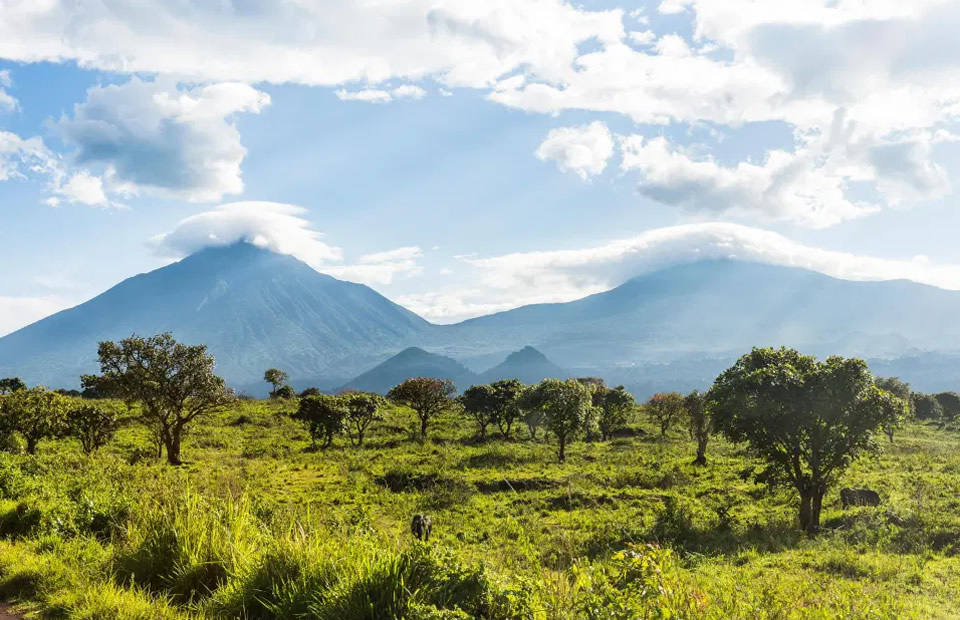
New initiative to Help Hearing-impaired Travellers to Virunga Volcanoes
A new initiative that aims to tackle the myriad of problems faced by deaf and partially deaf travellers to the Virunga Massif, a chain of eight volcanic mountains that straddle Rwanda, Uganda and DR Congo, has been launched in Goma, the chief city of DR Congo’s Eastern Province. The Virunga Massif is best known as the only home to the world’s remaining mountain gorillas, which are estimated to be numbering about 1,000 individuals.
The new programme, under the auspices of the Goma-based Virunga Community Programmes, is a collaboration between the former, Red Rocks Cultural Centre in Rwanda, Amani Safaris in DR Congo, as well as the African Sign Language Interpreters and Translations Agency (AITA) in Uganda.
According to Francis Ndagijimana, the coordinator of Virunga Community Programmes, the key aim of the initiative is to encourage the hearing impaired and hard hearing visitors to be integrated in conservation programmes and supportive efforts in community development programmes in Rwanda, Uganda and DR Congo.
“The deaf face many problems cutting across all sectors of social, economic and cultural development. It’s time for those who care to stand up and care about their plight. Our programme is going to address many problems they face and ensure they enjoy what nature has to offer just like everyone else,” Ndagijimana said.
He adds that they have rolled out a host of initiatives to help facilitate the success of the programme, including training of tour guides in local sign language to help hearing impaired tourists enjoy the bounty of nature around the Virunga Massif just like any other person.
Ndagijimana affirms that people with disabilities like the deaf have similar motivations to travel as the rest of the population, but several tourists with disabilities face barriers to tourism participation, particularly in cultural, social and physical environments.
“The guides we train in local sign language will be specifically responsible to act as translators between the deaf tourists and locals, and we hope that this will eventually create some mutual understanding between the community around the Virunga Massif and visitors. Both parties have a lot to gain from each other,” he says.
Ndagijimana says that the programme recognises that tourism plays a key role in the wider economic, social and cultural development, and it has its own set of sectoral responses to the deaf that must be understood in each country’s cultural context.
The programme, according to Ndagijimana, also aims to encourage hearing impaired visitors to fully participate in community development and social interactions.
“Among our core objectives also includes acquisition of assistive devices for the deaf and partially deaf locals and tourists,” he adds.
According to the DR Congo National Union of the Deaf (DRCNUD), deaf people in the Virunga Massif face a complex web of problems, ranging from social, economic, cultural and developmental difficulties, negative attitudes by society towards deaf people, as well as communication barriers. Poverty further degrades deaf people’s attainment of dignity and unity and access to jobs and education in their communities and this limits their full enjoyment of the fundamental human rights entitled to all human beings.
DRCNUD was established by the deaf after realizing that their needs and concerns were ignored by the wider society.
“We can longer bury our heads in the sand like the proverbial ostrich and pretend that deaf people have nothing of significance to contribute to the society. The societal stigma associated with being deaf should be a thing of the past,” Ndagijimana says, adding that his organization also aims to provide assistance to deaf schools of Goma in DRC, Cyanika School of the Deaf in Uganda, and Musanze School of the Deaf in Rwanda through purchase of scholastic materials peculiar to the deaf.
The programme is also going to provide material assistance to hearing impaired children between the ages of 5-16 to go to school and provide health insurance to hearing impaired kids.
Greg Bakunzi, the founder of Red Rocks Cultural Centre in Nyakinama village, Musanze district, northern Rwanda, says the new initiative is going to help deaf tourists not to feel left out of what the tourism industry has to offer around the Virunga Massif.
“I have been in the tourism industry for several years but there are unique problem deaf tourists face. Surely, something must be done,” says Bakunzi, who is also the founder and managing director of Musanze-based Amahoro Tours, one of the biggest tour companies in Rwanda.
Read More
Tarik Bekhira makes Club Rachad Bernoussi debut
French youngster Tarik Bekhira achieved a remarkable feat in the Botola 2 by making his debut for Club Rachad Bernoussi.
The Bordeaux-born attacker seized the spotlight during the away clash against JS Massira, marking a significant milestone in his burgeoning career.
The former Bayonne U19 talent lasted the entire duration of the game as Club Rachad Bernoussi defeated JS Massira away at the Sheikh Mohamed Laghdaf Stadium in the ongoing 2017 Botola 2 League.
The 20-year-old joined Club Rachad Bernoussi during the ongoing September winter transfer window after a successful season at Bayonne U19 where he scored 10 goals in 17 games.
Read More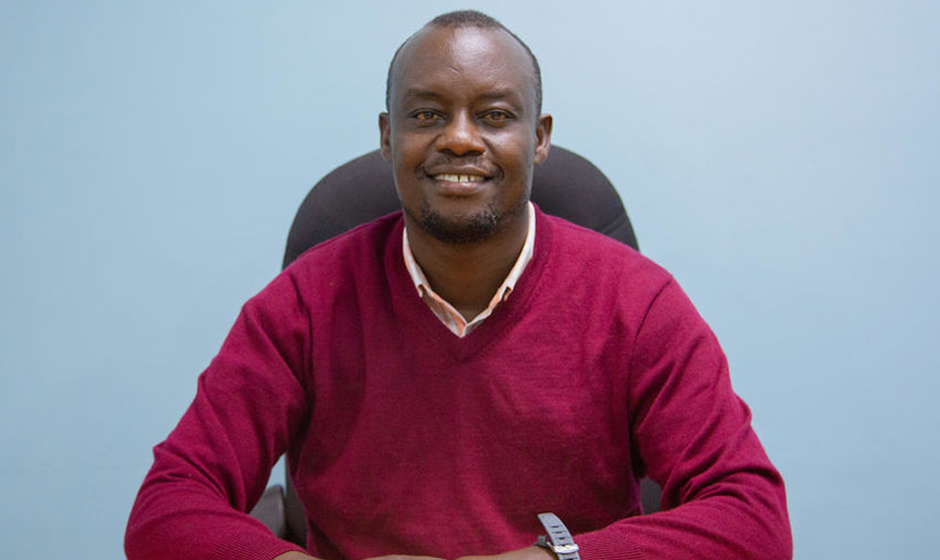
Bakunzi: In Love With Zimbabwe, Greece and Thai food
Traveling can be fun, but at the same time, it’s also fraught with scary experiences. Greg Bakunzi, the managing director of Amahoro Tours, has so far visited four continents and 53 countries. He talks to Eye Rwanda about his travels…
Do you sometimes travel with your pets?
I have two dogs but I have never traveled with them. I have a feeling that traveling with pets can be cumbersome, particularly when you are on a business trip. And most of my travels are always for business and networking.
But if someone is to travel with pets, which particular country would you recommend?
Western countries. I can’t put a finger on which particular one, but most Western countries I have visited have soft spot for pets and you also find several pet-friendly accommodations.
Any worst experience at an airport?
Fortunately I have never had any horrible experience at an airport that split my hair. Of course there are normal ones like take-off delay but those are things you learn to live with as a traveller.
And the best?
At Amsterdam Airport. We were there at the airport chilling and waiting for our flight and suddenly this group of happy, excited and jubilant people dressed in Scottish traditional attire appeared. They engaged us in their traditional culture, and even shared Scottish wine with us. It was spontaneous and amazing!
Which country would you wish to visit again?
Greece. This is a place with endless, wonderful experiences. There’s always more to discover, explore, feel and taste. It’s a place you expand your five senses with elements of nature that provide countless possibilities.
Apart from Rwandan food, where else have you enjoyed a truly delicious meal?
I really enjoyed Thai food when I traveled to Thailand. It is oil-free, hence good for health. Thai food is largely traditional and thus it’s home-made and hand-made and the recipes are handed down over generations. It serves your palette with a variety of tastes.
If you were to choose a family vacation, which country would you choose first?
Greece, of course. The attractions there are excellent for adults and children alike and the country’s history is also amazing. I know kids would love to learn many things there while having a memorable time exploring its breathtaking attractions.
Which African country would you recommend to anybody?
I would advise Zimbabwe to be on any traveller’s bucket-list. The country just has amazing features that are quite unique to it.
Which continent have you never visited?
Australia. But it is in my plans. I want to explore all the continents.
Read More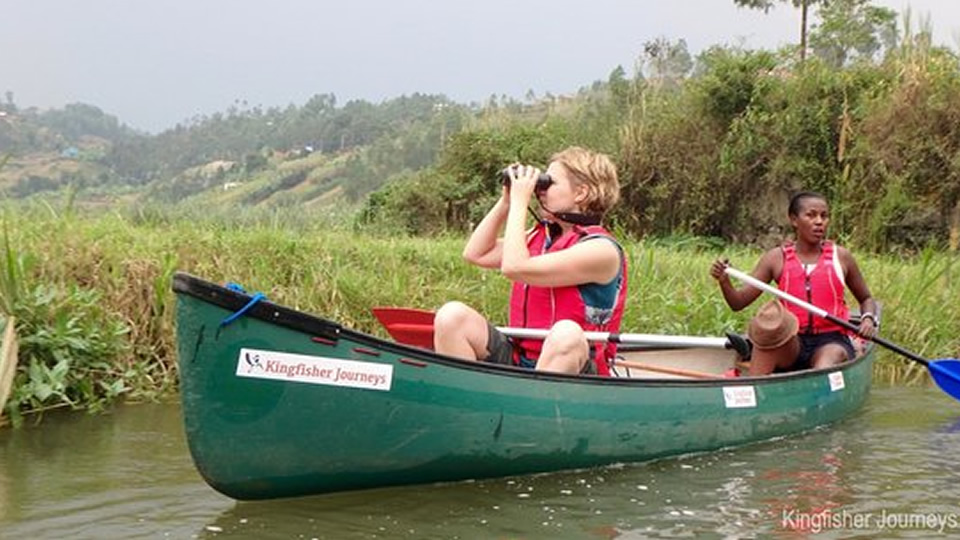
Kingfisher Diaries 2: Spectacular Lake Kivu
Lake Kivu lies on the border between the Democratic Republic of the Congo and Rwanda. It is one of Great Lakes in the Albertine Rift, the western branch of the East African Rift. There are about 200 small rivers that flow into it from a relatively small catchment whilst the outflow is to the Ruzizi River, which flows southwards into Lake Tanganyika and ultimately into the mighty Congo.
Lying at 1463 m above sea level, its surface area is 2,370 km2, the average depth is 240m whilst the maximum depth is 485m and its total volume is an impressive 560 km3. Lake Kivu has a very irregular shape with a large island, Île Idjwi, the tenth largest in the world, in the southern DRC part of the lake. The maximum distance from one end of the lake to the other is 103km whilst it’s about 48km across.
Lake Kivu is unique with many features setting it apart from all others in the world.
For example, it used to flow to the north and drain into the Nile. However, around 12,000 years ago, lavas flows from the Virunga volcanoes dammed this outflow, reversing the direction of its waters and also causing the depth to increase. Then around 5,000 years ago when local volcanism and hydrothermal activities began to affect the lake and it became very stratified with different layers that hardly interact with each other.
This stable stratification is the secret to the lake’s huge resource; more than any other lake in the world, it has vast quantities of trapped methane at depths of over 200m. So there are projects near to Gisenyi and Kibuye that are beginning to extract this reserve.
The surface water temperature is 24°C. At depth, almost every other (non-frozen) lake in the world is cooler than at the surface with the usual bottom temperature being about 4 °C. However, in Lake Kivu, geothermal activity keeps the temperature in the lower layers at 26 °C – higher than at the surface.
With very steep sides, river run offs (and most pollutants from the towns around the lake) descend quickly to the depths. The surface layer therefore comprises very clean, fresh water, in which some 31 species of fish live, many of which are caught by local fishing cooperatives using their unique fishing boats. However, there are no large animals such as hippopotamus or crocodiles.
If an industrial extraction process does not remove it, the dissolved methane and carbon dioxide in the deep layers, will eventually – and very catastrophically – erupt. However, this event is still many decades away, so for now it is totally safe to enjoy the beauty and tranquillity of Lake Kivu.
In Rwanda, there are several large towns on the shores of Lake Kivu: Rubavu also known as Gisenyi) is in the north, in the shadow of the Nyiragongo Volcano (with the world’s largest lava lake in its crater) just over the border in DRC. Karongi (or Kibuye) is set in a beautiful location near numerous uninhabited islands and long peninsulas that extend deep into the lake. At the far southern end is Kamembe – where nearby protected forests still reach the lakeshore. In many of the numerous smaller communities that dot the coast, there are fascinating coffee washing stations and many colourful markets that are worth lingering for a visit.
With many lodges to be found on Lake Kivu, it’s easy to find accommodation with some of the best views in Rwanda. However, did you know that you could also stay on a Houseboat called Iliza that cruises around the lake? Or for something a little more active, try the Number 1 on Trip Advisor: Go kayaking with Kingfisher Journeys. With short trips from Gisenyi and Kibuye or up to or a 4-day adventure – With professional guides and modern equipment, this is the best way to experience Lake Kivu, see its wildlife and birds and meet the communities that make Lake Kivu their home.
You can learn much more information about Lake Kivu itself from the Lake Kivu Monitoring Programme. Or for kayaking trips contact Kingfisher Journeys or ask your tour operator to include one of their trips in your itinerary.
Read More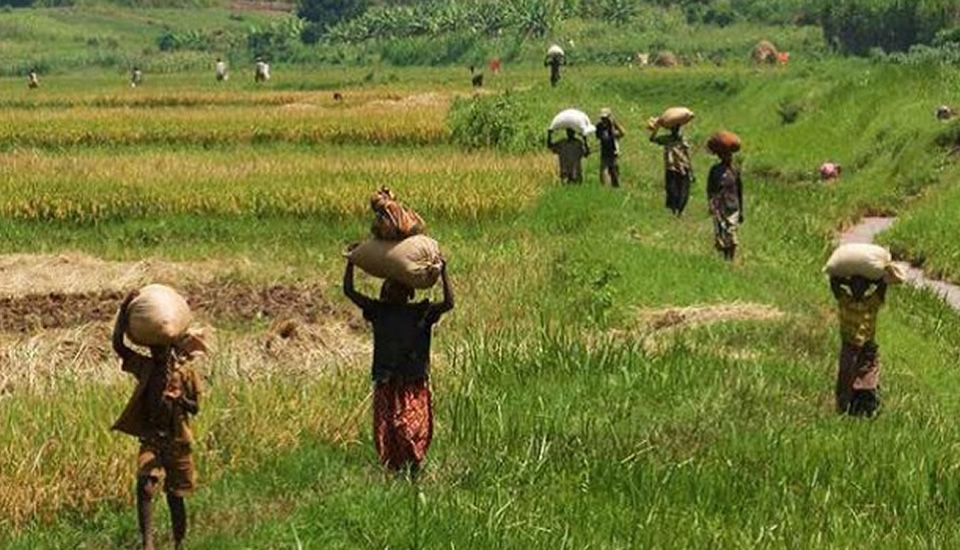
Azizi Life Experiences
Azizi Life Experiences is a social enterprise that offers visitors to Rwanda the unique opportunity to really connect and gain insight into the life of rural Rwandans and their families. Through a range of different cultural experience days, you get to not only see something of the beauty and rigor of daily life, but also experience it. It’s a truly interactive way to learn about Rwandan culture! Azizi Life Experiences currently offers six distinctive Experience Days.
Azizi Life’s office is located in Muhanga town, about one hour by car or bus from Kigali on the main Kigali-Huye road. Azizi Life celebrates the beauty of connections that bring a fair wage to hard-working Rwandan artisans and give you a glimpse into someone else’s world. Would you like to do something different on your Rwanda tour? You should consider going on an ecotour and get to learn more about the real life of the Rwandan people!
Weaving Experience:
The Azizi Life Experience morning begins with a drive to a nearby village, where you and your Azizi Life interpreter are welcomed by the ladies of the weaving cooperative. After introductions , a morning of family chores begins. You might help out in the kitchen, collect water from the valley spring, cut grass for the farm animals and get out in the fields for a seasonal agricultural activity.
At noontime, you share a simple local meal with your host family, with plenty of time to chat and learn about each other’s lives. After lunch, you join with the artisan cooperative for an afternoon of weaving. You get to learn how to harvest and prepare the natural fibers, and then the artisans teach you how to create your own piece of sisal jewelry. It is great sitting with the ladies as you weave and laugh together.
The day finishes back at the Azizi Life office, with a cold Fanta and a chance to think back over the highlights of the day. There you can browse through some of the beautiful crafts made by the Azizi Life artisans and do a little fair trade shopping.
Traditional Construction:
You may have seen the high rise buildings in Kigali, but this Azizi Life Experience is your chance to learn something about the traditional building techniques, some of them used since the times of the King. In the morning you start with collecting water and soil then you are taught how to make mud bricks. After making your own bricks, you dig the foundations and learn how to lay the bricks in a certain way that ensures the building’s strength.
At this point, you will have built up a bit of an appetite and so everyone stops work and shares a simple home cooked lunch with the host family. In the afternoon, you go and collect banana leaves, then you are taught how to make them into a strong rope that can then be used to lash wood together to make a roof. You finish the day back at the Azizi Life office with a cold Fanta and all the knowledge you need to build your very own mud brick house.
Banana Juice making:
Traditionally shared during weddings and other celebrations, banana juice (and beer!) has long been a central part of Rwandan parties. Although nowadays banana juice can be easily bought from the local store, the traditional technique for making your own brew is a much greater labor of love.
In the morning, of your Azizi Life Experience, you work with your rural host to collect the green bananas and the leaves needed to begin the process. Next you dig a hole and bury the bananas to ripen over time.
After enjoying a simple meal with your host family, you head into the valley to collect water. The ripening process takes four days, but don’t worry, you won’t need to wait. Your hosts will have some already buried bananas for you to dig up. You then peel, mash, and strain the bananas using traditional techniques, and voila- you’ve made authentic banana juice. The day finishes back at the Azizi Life office where the juice is boiled so it is ready for you to taste and take away.
Select from a simple variety of seasonal dishes for your custom traditional cooking experience with a rural mama! Your day begins not in the kitchen but in the fields as you learn seasonal planting or harvesting of fresh ingredients for your traditional meal. Once the ingredients and water have been collected, food preparation begins with washing, peeling, pounding, and grinding the ingredients using traditional methods and tools and this is done in the outdoor kitchen.
Throughout the process, your hostess and the ladies of the local cooperative teach and guide you, always allowing you to experience the day at your own pace. When your meal is ready, it is time to enjoy fruits of your labour with either a fork or with your finger. Sitting in the home of host family, there is plenty of time to chat and learn about each other’s lives.
Traditional Drumming:
Whether you have natural rhythm or not, with our expert instructors everyone can enjoy learning traditional drumming and dancing. Your Azizi Life Musical Experience begins with a mini performance from a small troupe of traditional performers. Next, it’s your turn to put on a traditional costume and give it a try. You’ll have fun as the dancers teach you some basic dance steps and share a bit of the history of Rwandan dance. After some practice time, the expert dance instructors help you put everything together in a performance of your very own. Don’t worry; an Azizi Life team member will be on hand to catch the whole thing on film!
After a break to catch your breath, the drummers will teach you some traditional beats, or you can even do a bit of free styling of your own on the traditional drums. No experience or expertise is necessary; it is simply fun for anyone brave enough to give it a go.
Azizi life Pathways:
Thanks to Rwanda’s lush green hills, beautiful valleys and welcoming people, it may be one of the easiest and most exciting places in East Africa to explore by foot. All around the rural communities, there is already a vast network of paths ready and waiting for you to explore. Local
Guides Enjoy local knowledge and good company as you explore! The guides, who speak English or French, enrich your walk with information on the communities you pass and points of interest.
You can enjoy scenic rural excursion or choose an in town exploration, visiting the local markets and experiencing other aspects of urban life. You can choose the mapped routes or create your own adventure.
Read More